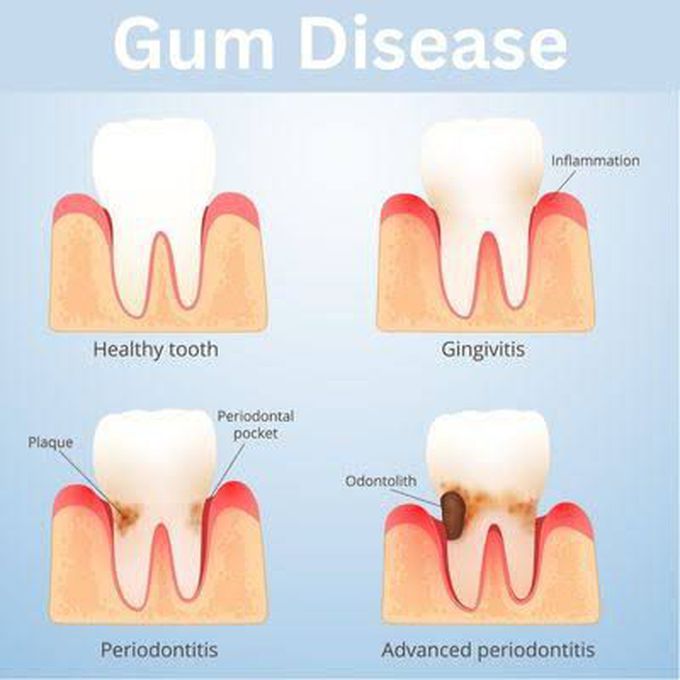


Stages of periodontal diseases
Healthy gums are firm to the touch. They don’t bleed or swell. But periodontal disease can cause discolored (reddish or purplish), swollen, bleeding gums. Left untreated, gum disease can cause destruction of your underlying jawbone, leading to possible tooth loss. The breakdown of tissues around your teeth happens gradually. In fact, most people don’t experience pain with gum disease — especially during the early stages. So, it’s important to know the warning signs. There are four stages of gum disease: Gingivitis. This is the earliest stage of gum disease. It starts with red, puffy gums that may bleed when you brush or floss. At this stage, there’s no bone loss. As a result, gingivitis is totally reversible with proper treatment. Mild periodontitis. The bacteria have seeped beneath your gums, affecting the supporting bone. Your gums may pull away from your teeth, creating pockets around them. Plaque and bacteria like to hide in these pockets, where your toothbrush and floss can’t reach. Moderate periodontitis. Left untreated, bacteria begin to erode the ligaments, soft tissues and bone that hold your teeth in place. You may notice bad breath and pus (infection) around your gum line. Some people develop pain at this stage. Advanced periodontitis. As periodontal disease worsens, bone loss continues. This can cause your teeth to become loose and eventually fall out.

